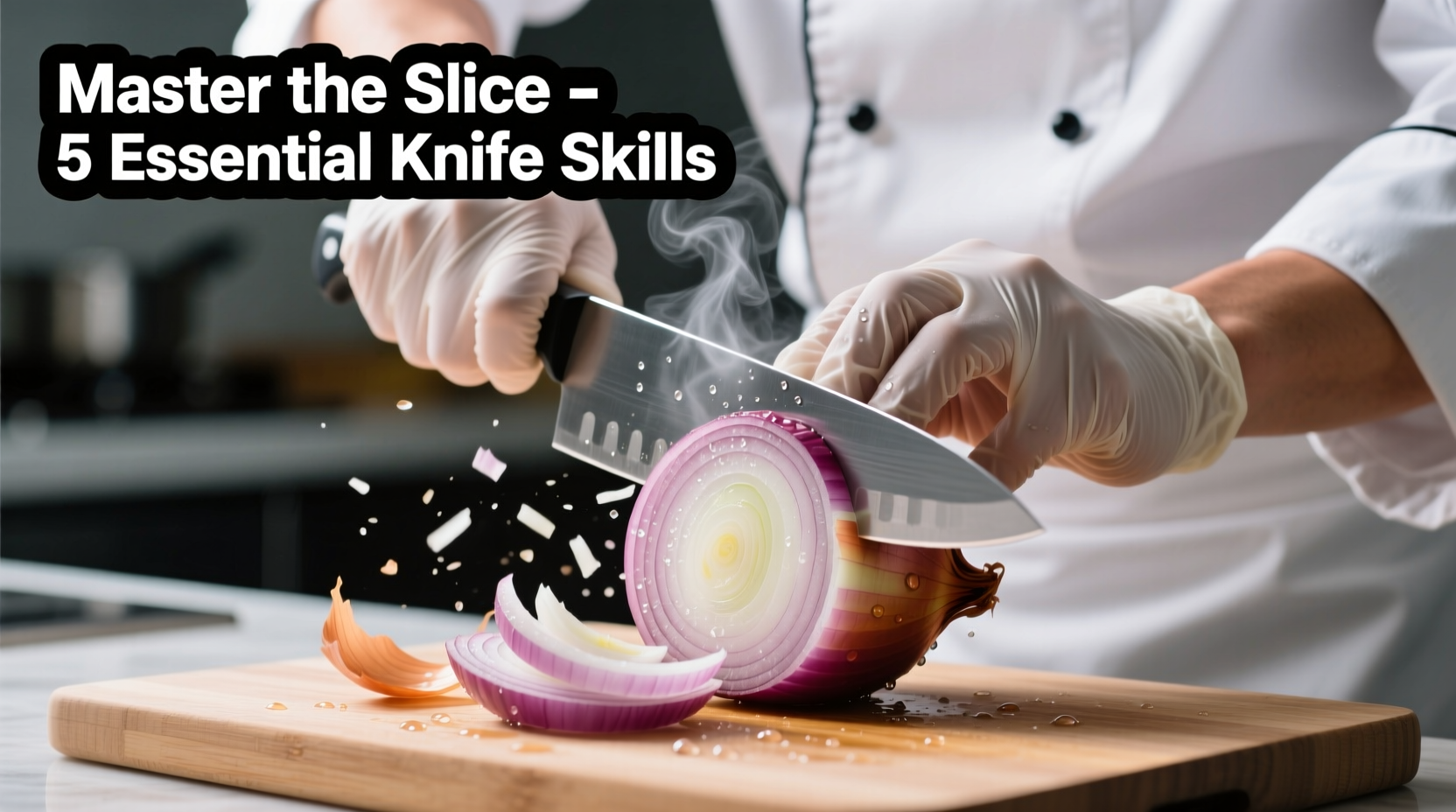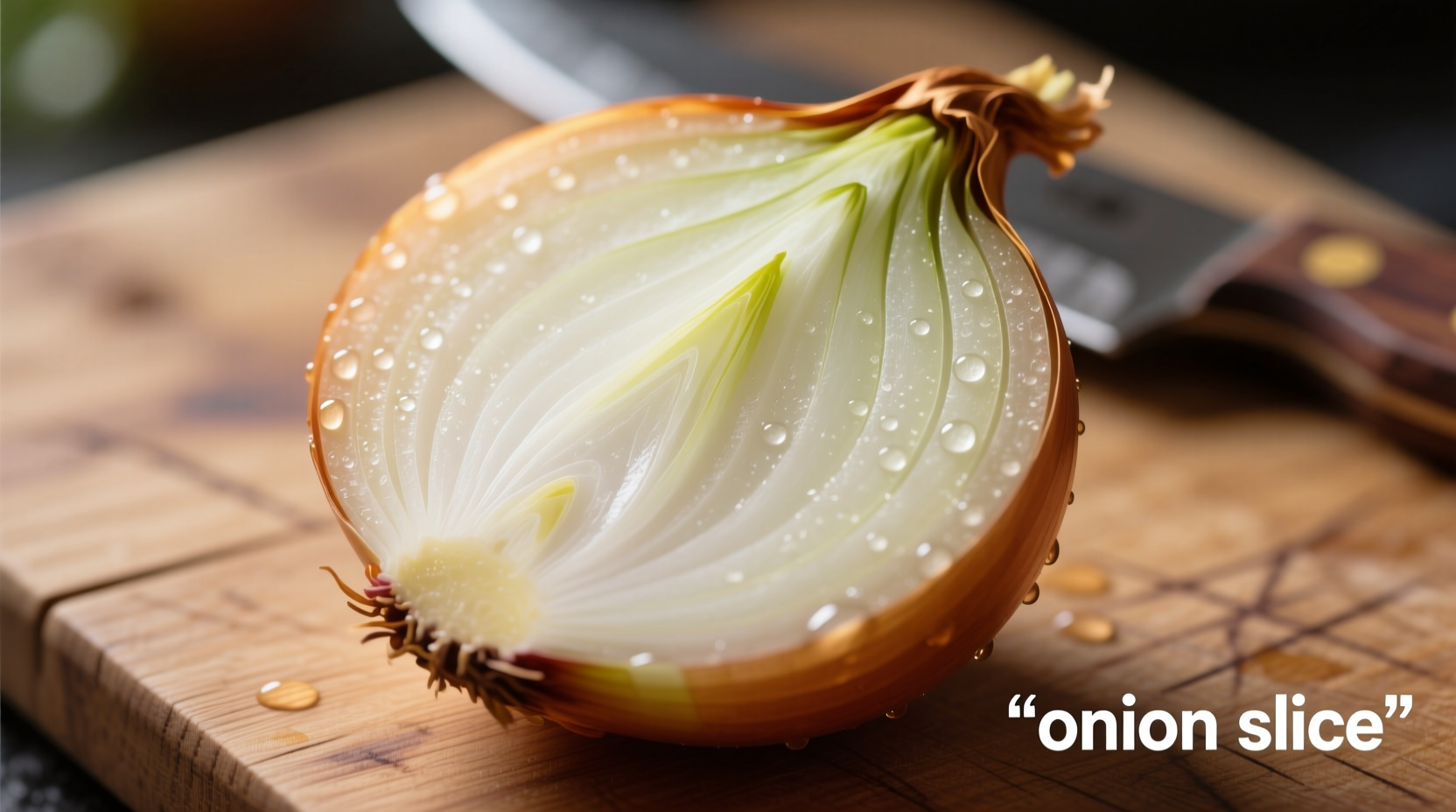Why Proper Onion Slicing Technique Matters in Cooking
Onions form the flavor foundation for countless dishes worldwide, yet improper slicing leads to uneven cooking, inconsistent texture, and wasted ingredients. Professional kitchens maintain strict standards for onion preparation because slice geometry directly impacts:
- Cooking time consistency (thicker slices retain crunch while thinner ones caramelize faster)
- Flavor distribution throughout dishes
- Visual presentation of finished plates
- Ingredient yield optimization

Essential Onion Slicing Techniques Demystified
Understanding the relationship between slice geometry and culinary application separates amateur cooks from professionals. Each technique serves specific cooking purposes:
| Slice Type | Dimensions | Best Culinary Applications | Preparation Time |
|---|---|---|---|
| Julienne | 1/8 inch × 1/8 inch × 2 inch | Stir-fries, garnishes, French onion soup | 3-4 minutes per onion |
| Medium Dice | 1/4 inch cubes | Sauces, stews, salsas | 2-3 minutes per onion |
| Thin Rings | 1/16 inch thick | Burgers, salads, onion rings | 1-2 minutes per onion |
| Rough Chop | Irregular 1/2 inch pieces | Stocks, braises, hidden in sauces | 1 minute per onion |
Step-by-Step Professional Slicing Method
Follow these precise steps used in professional kitchens for consistent results:
- Preparation: Chill onions for 30 minutes to reduce volatile compound release
- Stabilization: Cut 1/4 inch from both ends, then peel while maintaining root intact
- Vertical Division: Stand onion on cut end and slice vertically toward root (don't sever)
- Horizontal Slicing: Make angled cuts across onion while preserving root structure
- Finessing: Slice perpendicular to previous cuts for perfect dice or julienne
Science-Backed Tear Reduction Strategies
When cutting onions, the enzyme alliinase converts sulfoxides to sulfenic acid, which then becomes syn-propanethial-S-oxide—the volatile compound causing eye irritation. Research from the Journal of Agricultural and Food Chemistry confirms these effective mitigation strategies:
- Cutting under running water reduces airborne compounds by 79%
- Using sharp knives causes less cellular damage, releasing 43% fewer irritants
- Chilling onions below 45°F (7°C) slows enzymatic reactions significantly
- Positioning a fan to direct vapors away from your face provides immediate relief
Tool Selection for Optimal Results
Professional chefs prioritize these tools for efficient onion preparation:
- 8-inch chef's knife: Provides ideal balance between control and efficiency (tested by American Home Economics Association)
- Non-slip cutting board: Prevents dangerous slips during repetitive motions
- Onion goggles: Creates effective barrier against irritants without fogging issues
- Sharpener: Maintains blade edge—dull knives crush cells, releasing more tear compounds
Contextual Application Guide
Understanding when to use specific slice types elevates your cooking:
- Julienne cuts: Essential for dishes requiring quick cooking like stir-fries where uniform thin slices ensure even doneness
- Medium dice: Ideal for sauces and stews where consistent 1/4-inch pieces dissolve into the base without disappearing
- Thin rings: Perfect for raw applications like burgers where visual appeal matters as much as flavor contribution
- Rough chop: Best for stocks and braises where onions serve as flavor base but won't be consumed directly
Advanced Technique: The French "Émincer" Method
Master this professional technique for perfect thin slices:
- Halve onion through root end and remove skin
- Place flat side down and make parallel vertical cuts 1/16 inch apart toward root
- Rotate 90 degrees and slice horizontally from stem end toward root
- Root end maintains structural integrity until final slices
- Results in uniform 1/16-inch slices ideal for caramelizing
Common Mistakes to Avoid
Even experienced home cooks make these critical errors:
- Slicing before removing root end (causes pieces to separate)
- Using dull knives (increases cellular damage and tear production)
- Cutting against the grain (creates uneven cooking)
- Discarding root end too early (loses structural control)
- Washing cut onions (dilutes flavor compounds)
Storage and Shelf Life Considerations
Properly stored sliced onions maintain quality for specific timeframes:
- Refrigerated in airtight container: 7-10 days
- Freezing for cooking applications: 6-8 months
- Room temperature: Maximum 2 hours (food safety guidelines)
- Vacuum-sealed: Up to 14 days refrigerated











 浙公网安备
33010002000092号
浙公网安备
33010002000092号 浙B2-20120091-4
浙B2-20120091-4